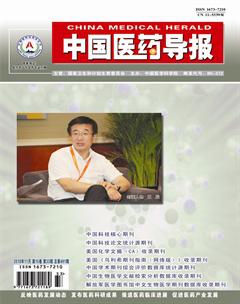调节肌肉合成代谢的新途径进展
任广旭 袁超
[摘要] 骨骼肌在人类健康以及疾病中发挥着重要的作用。在很多肿瘤、慢性心脏衰竭以及营养缺乏的状态下,会表现出以肌肉质量和力量丢失为特征的肌肉萎缩的症状。肌肉萎缩严重影响生存质量,甚至会威胁患者生命。虽然目前研究人员已经发现炎症和营养健康状态都会导致肌肉萎缩,但是具体的调控网络仍然不是很清楚。最近的研究揭示人体中肠道微生物可能也参与调控肌肉的合成代谢。因此,本文将综述最近有关“肠-肌”轴的研究进展以及所涉及的分子机制。
[关键词] 骨骼肌;肠道菌群;膳食;合成代谢
[中图分类号] R685 [文献标识码] A [文章编号] 1673-7210(2018)11(c)-0021-04
Progress in the new approaches to regulation of muscle synthesis and metabolism
REN Guangxu1 YUAN Chao2
1.Institute of Food and Nutrition Development, Ministry of Agriculture, Beijing 100081, China; 2.China National Food Industry (Group) Corp, Beijing 100062, China
[Abstract] Skeletal muscle plays an important role in human health and disease. In many tumors, chronic heart failure and nutritional deficiency, the symptoms of muscular atrophy are characterized by loss of muscle mass and strength. Muscle atrophy seriously affects the quality of life, and even threatens the lives of patients. Although researchers have found that inflammation and nutritional health state can lead to muscle atrophy, the specific regulatory network is still not clear. Recent studies have revealed that gut microbes in the human body may also participate in the regulation of muscle synthesis. Therefore, we will review the recent progress in the study of the "gut muscle" axis and the molecular mechanisms involved.
[Key words] Skeletal muscle; Gut microbiota; Diet; Anabolism
人體的微生物群落由约100亿的微生物组成,数量至少是人体细胞的10倍[1],这些微生物与人体细胞处于一个共生状态[2]。绝大多数微生物定植在肠道,他们具有许多重要功能。肠道菌群能够诱导广泛的宿主反应,参与调控肠道屏障、免疫和内分泌等诸多生理功能。此外,肠道菌群也可以影响肠道外组织细胞,调节能量平衡和系统性炎性反应[3]。人类肠道中的微生物主要由拟杆菌门(Bacteroidetes)和厚壁菌门(Firmicutes)组成,它们的数量超过了总体的90%[4]。在人的一生中,肠道菌群的组成始终处于动态的变化中,尤其是从出生到3岁期间变化最为显著,之后相对稳定性会逐步地建立起来[5-6]。肠道微生物在维持机体健康方面一直都是“默默无闻”地贡献着自己的力量[7],尤其在年龄比较大的人群中,肠道微生物对健康的影响就会变得比较突出[8]。
骨骼肌是人体最大的器官,其约占身体质量的40%[9]。骨骼肌系统较为熟知的功能是维持机体运动功能。此外,骨骼肌还具有许多其他功能,如,作为机体最大的宏量营养素的保存库,保护内脏器官,维持核心温度,通过释放细胞因子和生长素来与体内其他器官进行通讯等[10]。肌肉萎缩往往伴随着持续性的肌肉以及力量的丢失,这通常是由于蛋白质合成降低以及蛋白质降解增加[11]。这种肌肉萎缩通常发生在许多慢性和炎症疾病中,比如癌症、慢性心衰、慢性感染及营养缺乏[12]。最近,“肠-肌”轴调控概念也被提出[13],提示对于一些少肌症的患者可以寻找一种新的途径通过改变肠道菌群的组成模式来改善少肌症状。
1 肠道菌群与骨骼肌代谢
由于肠道菌群定植于胃肠道,因此表面上这些细菌更多的是影响营养吸收和氨基酸的合成等代谢功能[14]。肠道菌群调节能量代谢最好的例证是夸希奥科病(Kwashiorkor),这种疾病可以通过膳食改善促进微生物重建(增加双歧杆菌和乳酸菌)从而得以暂时性地缓解[15]。与此同时,营养素的过度摄入和储藏与肠道菌群多样性的降低有关[16]。除此之外,也有证据表明肠道菌群也能影响骨骼肌组织的代谢反应[13,17]。2004年一项开创性研究将自然生长的小鼠盲肠内容物移植到无菌(GF)小鼠体内,导致小鼠增长60%的体脂,与此同时胰岛素敏感性和血糖耐受能力均有所降低[18]。由于肌肉是葡萄糖代谢不可或缺的组织,因此这个研究间接地表明肠道菌群能够调节肌肉的代谢功能。细菌定植造成GF小鼠体内三羧酸循环中间体的累积,而高能磷酸的积累并没有增加,这似乎降低了骨骼肌的代谢效率。同一研究小组又通过比较GF小鼠与正常鼠骨骼肌蛋白活性及基因表达谱发现,GF小鼠骨骼肌的腺苷酸活化蛋白激酶(AMPK)和肉碱-棕榈酰-转移酶-1(CPT-1)活性较正常老鼠更强[13]。这些研究表明肠道菌群可以通过调节骨骼肌生物能量途径来影响身体组成。
2 肠道菌群和骨骼肌大小的关系
年龄相关的炎症与肌肉大小和功能的降低有着密切的关系[19]。肥胖可通过增加炎症负担来加速少肌症的发展,最终发展成少肌性肥胖[20]。Bindels等[21]在白血病小鼠模型中将靶向菌群作为一种方法来影响瘦肉质量。在该白血病模型中,小鼠肠道菌群出现以乳酸杆菌失调为代表的肠道菌群失衡,通过给白血病小鼠口服含有乳酸杆菌的益生菌,血清中炎性细胞因子白细胞介素(IL)-6和人单核细胞趋化蛋白(MCP)-1的含量显著降低。有意思的是这种对细胞因子的影响是菌群特异的,也说明乳酸菌与骨骼肌大小存在着一定的关系。Cani等[22]研究了益生菌补充剂对骨骼肌改变的影响,他们向肥胖的小鼠喂养低聚果糖后,血液中脂多糖(LPS)以及炎性因子明显减少,同时小鼠肌肉质量也得到了增加。跟踪性研究确定了益生元补充给肠道微生物后,拟杆菌门/厚壁菌门的比例出现改变,同时肠道乳酸杆菌和双歧杆菌的数量也有所增加[23]。通过饲喂含有低聚果糖以及乳酸菌的合生元,发现白血病老鼠体内埃希杆菌(Escherichia)降低,同时乳酸菌和双歧杆菌的增殖增加[24]。上述证据表明,乳酸杆菌和双歧杆菌可能参与调控宿主的肌肉大小,影响“肠-肌”交流。
3 肠道菌群和骨骼肌功能
相关研究发现给年轻大鼠饲喂高脂、高糖的饮食后,大鼠体内肠杆菌比例增加,而乳酸菌的数量则显著降低[25-26],这些改变跟老年人体内的变化相似。与之相对应的是体内炎性細胞因子(IL-6、TNF-α和MCP-1)的数量也显著升高,更值得注意的是3 d后骨骼肌中脂肪含量也出现显著的增加[27]。肠道菌群调节肌肉组成的另一证据是研究发现肠道菌群参与能量代谢以及调节猪肌肉内脂肪含量[28],年龄相关的肠道菌群的改变促使了脂肪向骨头浸润[29]。然而这些研究都有一个问题,没有阐明究竟肠道菌群的改变是肌肉组成改变的发起者还是其改变的一个结果。益生菌营救肌肉丢失的小鼠的研究表明肠道微生物可能是这种关系的启动者[21,24]。
Tongeren等[26]最早研究肠道菌群与肌肉功能之间的关系,这项研究在23例高龄人群中进行,他们发现出现骨脆的老人体内乳酸杆菌比例显著降低,而肠杆菌的含量却有明显的增加。而且,肌肉功能较好的患者由于体内存在能够产生丁酸盐的细菌,包括柔嫩梭菌群(Faecalibacterium prausnitzii)、梭菌目(Clostridiales)、罗氏菌属(Roseburia)、毛螺菌科(Lachnospiraceae)、韦荣球菌科(Erysipelotrichaceae),从而防止了肠道菌群的失功能性改变。实际上,丁酸盐被证明能够通过重塑紧密连接来增强肠道屏障功能[30]。这在理论上应该能够减少内毒素的转移并且降低循环的炎性细胞因子。
4 肠道菌群调控骨骼肌功能的分子机制
GF小鼠肌肉中AMPK活性是增高的。AMPK的功能是作为“燃料表”检测细胞内能量的状态。AMPK激活伴随着CPT-1升高,CPT-1在线粒体上主要负责催化限速步骤,即长链脂肪酸脂肪酰辅酶A(acylCoA)的进入,从而增加肌肉活力[13]。而且,GF小鼠肠道空腹诱导脂肪细胞因子(Fiaf)的水平显著升高,这伴随着过氧化物酶体增殖物激活受体γ辅激活因子1α(PGC-1α)的高表达[13]。肠道菌群能够产生各种代谢物,比如共轭亚油酸,醋酸、胆汁酸等,这些产物能够进入肌肉中[3]。肠道菌群能够提供各种胆汁酸,它们能通过G蛋白偶联胆汁酸受体Gpbar 1(TGR5)激活甲状腺激素,从而增加骨骼肌细胞能量支出[31]。核转录因子(NF)-κB在肌肉中特异性的激活能够造成肌肉的萎缩[32]。肌肉细胞有Toll样受体(TLR)-2、TLR-4和TLR-5,能够识别革兰阳性细菌、脂多糖和鞭毛蛋白,从而激活肌肉细胞内NF-κB细胞通路[33]。有研究发现,急性白血病模型小鼠口服特异的乳酸菌后,肌肉萎缩的现象被明显地削弱,这可能与肠道菌群参与调控氨基酸代谢有关[21]。肌肉蛋白代谢是蛋白质合成和降解的共同作用的结果。肌肉蛋白合成是由许多因素刺激诱导的,比如抗阻运动、食物摄入等[34]。膳食蛋白的氨基酸组成(必需氨基酸如亮氨酸)和他们的吸收效率(蛋白质的降解速率和氨基酸的吸收速率)通过直接或者间接的方式调控着骨骼肌的合成代谢反应[35]。在胃肠道,膳食和内源性蛋白被人体或细菌的蛋白酶水解成肽段和氨基酸[36],所产生的多肽随后被释放到肠道维持细菌的生长[37]。氨基酸是细菌合成短链脂肪酸(丙酸、丁酸盐和醋酸)的前体物质[38],肠道微生物活性与宿主氨基酸和短链脂肪酸稳态之间有着一定的联系。
5 小结
目前已经有大量的线索提示肠道菌群可能参与调控肌肉萎缩相关的代谢通路,这将为临床治疗相关肌肉萎缩提供一个崭新的思路。已有研究发现肠道菌群的组成可以通过饮食、益生菌以及肠道菌群移植等相关手段加以改变,所以将来可以通过改变肠道菌群的方法改善肌肉萎缩。但是,在实现这个目标之前仍然需要在很多方面进行突破,比如需要明确肠道菌群调控肌肉萎缩的具体分子机制,明确具体哪些菌群参与调控肌肉萎缩。
[参考文献]
[1] Bindels LB,Delzenne NM. Muscle wasting:the gut microbiota as a new therapeutic target?[J]. Int J Biochem Cell Biol,2013,45(10):2186-2190.
[2] Sender R,Fuchs S,Milo R. Revised Estimates for the Number of Human and Bacteria Cells in the Body [J]. PLoS Biol,2016,14(8):e1002533.
[3] Delzenne NM,Cani PD. Interaction between obesity and the gut microbiota:relevance in nutrition [J]. Annu Rev Nutr,2011,31:15-31.
[4] Eckburg PB,Bik EM,Bernstein CN,et al. Diversity of the human intestinal microbial flora [J]. Science,2005,308(5728):1635-1638.
[5] Yatsunenko T,Rey FE,Manary MJ,et al. Human gut microbiome viewed across age and geography [J]. Nature,2012, 486(7402):222-227.
[6] Hill CJ,Lynch DB,Murphy K,et al. Evolution of gut microbiota composition from birth to 24 weeks in the INFANTMET Cohort [J]. Microbiome,2017,5(1):4.
[7] Shreiner AB,Kao JY,Young VB. The gut microbiome in health and in disease [J]. Curr Opin Gastroenterol,2015, 31(1):69-75.
[8] Lustgarten MS. Classifying Aging As a Disease:The Role of Microbes [J]. Front Genet,2016,7:212.
[9] Guridi M,Tintignac LA,Lin S,et al. Activation of mTORC1 in skeletal muscle regulates whole-body metabolism through FGF21 [J]. Sci Signal,2015,8(402):ra113.
[10] Pedersen BK,Febbraio MA. Muscle as an endocrine organ:focus on muscle-derived interleukin-6 [J]. Physiol Rev,2008,88(4):1379-1406.
[11] Fearon KC,Glass DJ,Guttridge DC. Cancer cachexia:mediators,signaling,and metabolic pathways [J]. Cell Metab,2012,16(2):153-166.
[12] Evans WJ,Morley JE,Argiles J,et al. Cachexia:a new definition [J]. Clin Nutr,2008,27(6):793-799.
[13] Backhed F,Manchester JK,Semenkovich CF,et al. Mechanisms underlying the resistance to diet-induced obesity in germ-free mice [J]. Proc Natl Acad Sci U S A,2007, 104(3):979-984.
[14] Jumpertz R,Le DS,Turnbaugh PJ,et al. Energy-balance studies reveal associations between gut microbes,caloric load,and nutrient absorption in humans [J]. Am J Clin Nutr,2011,94(1):58-65.
[15] Smith MI,Yatsunenko T,Manary MJ,et al. Gut microbiomes of Malawian twin pairs discordant for kwashiorkor [J]. Science,2013,339(6119):548-554.
[16] Grosicki GJ,Fielding RA,Lustgarten MS. Gut Microbiota Contribute to Age-Related Changes in Skeletal Muscle Size,Composition,and Function:Biological Basis for a Gut-Muscle Axis [J]. Calcif Tissue Int,2018,102(4):433-442.
[17] Choi Y,Kwon Y,Kim DK,et al. Gut microbe-derived extracellular vesicles induce insulin resistance,thereby impairing glucose metabolism in skeletal muscle [J]. Sci Rep,2015,5:15878.
[18] Backhed F,Ding H,Wang T,et al. The gut microbiota as an environmental factor that regulates fat storage [J]. Proc Natl Acad Sci U S A,2004,101(44):15718-15723.
[19] Jensen GL. Inflammation:roles in aging and sarcopenia [J]. JPEN J Parenter Enteral Nutr,2008,32(6):656-659.
[20] Cesari M,Kritchevsky SB,Baumgartner RN,et al. Sarcopenia,obesity,and inflammation-results from the Trial of Angiotensin Converting Enzyme Inhibition and Novel Cardiovascular Risk Factors study [J]. Am J Clin Nutr,2005,82(2):428-434.
[21] Bindels LB,Beck R,Schakman O,et al. Restoring specific lactobacilli levels decreases inflammation and muscle atrophy markers in an acute leukemia mouse model [J]. PLoS One,2012,7(6):e37971.
[22] Cani PD,Possemiers S,Van de Wiele T,et al. Changes in gut microbiota control inflammation in obese mice through a mechanism involving GLP-2-driven improvement of gut permeability [J]. Gut,2009,58(8):1091-1103.
[23] Everard A, Lazarevic V,Derrien M,et al. Responses of gut microbiota and glucose and lipid metabolism to prebiotics in genetic obese and diet-induced leptin-resistant mice [J]. Diabetes,2011,60(11):2775-2786.
[24] Bindels LB,Neyrinck AM,Claus SP,et al. Synbiotic approach restores intestinal homeostasis and prolongs survival in leukaemic mice with cachexia [J]. ISME J,2016, 10(6):1456-1470.
[25] Biagi E,Nylund L,Candela M,et al. Through ageing,and beyond:gut microbiota and inflammatory status in seniors and centenarians [J]. PLoS One,2010,5(5):e10667.
[26] van Tongeren SP,Slaets JP,Harmsen HJ,et al. Fecal microbiota composition and frailty [J]. Appl Environ Microbiol,2005,71(10):6438-6442.
[27] Collins KH,Paul HA,Hart DA,et al. A High-Fat High-Sucrose Diet Rapidly Alters Muscle Integrity,Inflammation and Gut Microbiota in Male Rats [J]. Sci Rep,2016, 6:37278.
[28] Fang S,Xiong X,Su Y,et al. 16S rRNA gene-based association study identified microbial taxa associated with pork intramuscular fat content in feces and cecum lumen [J]. BMC Microbiol,2017,17(1):162.
[29] Liu Y,Tang GY,Tang RB,et al. Assessment of bone marrow changes in postmenopausal women with varying bone densities:magnetic resonance spectroscopy and diffusion magnetic resonance imaging [J]. Chin Med J(Engl),2010, 123(12):1524-1527.
[30] Peng L,Li ZR,Green RS,et al. Butyrate enhances the intestinal barrier by facilitating tight junction assembly via activation of AMP-activated protein kinase in Caco-2 cell monolayers [J]. J Nutr,2009,139(9):1619-1625.
[31] Watanabe M,Houten SM,Mataki C,et al. Bile acids induce energy expenditure by promoting intracellular thyroid hormone activation [J]. Nature,2006,439(7075):484-489.
[32] Cai D,Frantz JD,Tawa NE Jr,et al. IKKbeta/NF-kappaB activation causes severe muscle wasting in mice [J]. Cell,2004,119(2):285-298.
[33] Boyd JH,Divangahi M,Yahiaoui L,et al. Toll-like receptors differentially regulate CC and CXC chemokines in skeletal muscle via NF-kappaB and calcineurin [J]. Infect Immun,2006,74(12):6829-6838.
[34] Picca A,Fanelli F,Calvani R,et al. Gut Dysbiosis and Muscle Aging:Searching for Novel Targets against Sarcopenia [J]. Mediators Inflamm,2018,2018:7026198.
[35] Martone AM,Marzetti E,Calvani R,et al. Exercise and Protein Intake:A Synergistic Approach against Sarcopenia [J]. Biomed Res Int,2017,2017:2672435.
[36] Macfarlane GT,Allison C,Gibson SA,et al. Cummings JH. Contribution of the microflora to proteolysis in the human large intestine [J]. J Appl Bacteriol,1988,64(1):37-46.
[37] Morowitz MJ,Carlisle EM,Alverdy JC. Contributions of intestinal bacteria to nutrition and metabolism in the critically ill [J]. Surg Clin North Am,2011,91(4):771-785, viii.
[38] Davila AM,Blachier F,Gotteland M,et al. Re-print of "Intestinal luminal nitrogen metabolism:role of the gut microbiota and consequences for the host"[J]. Pharmacol Res,2013,69(1):114-126.
(收稿日期:2018-06-01 本文編辑:罗乔荔)

